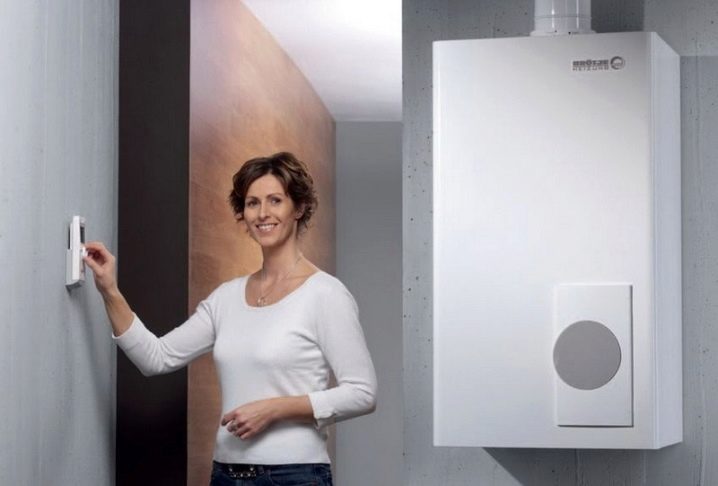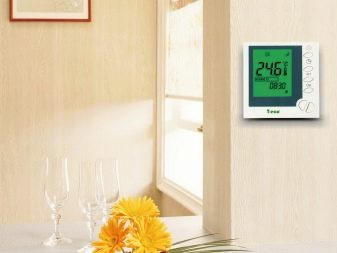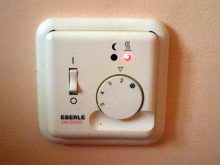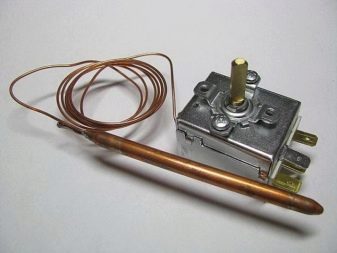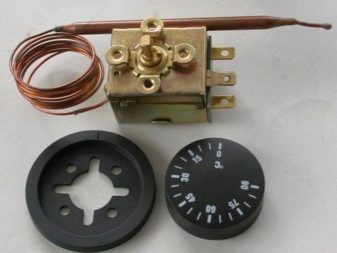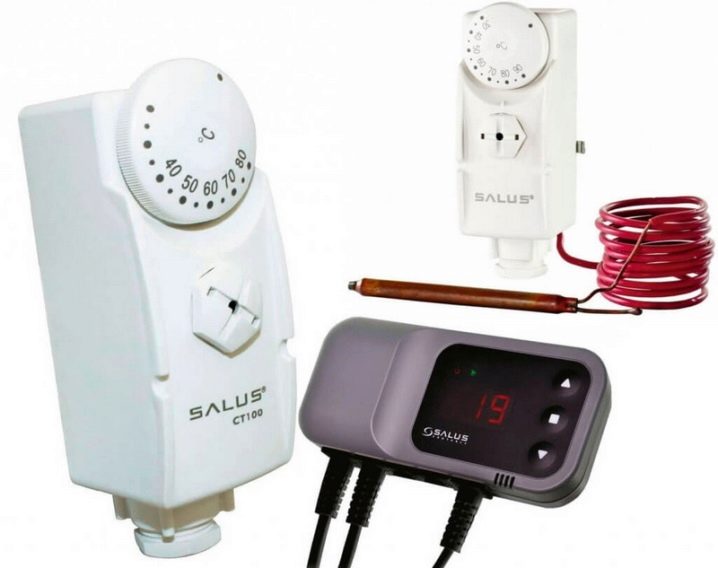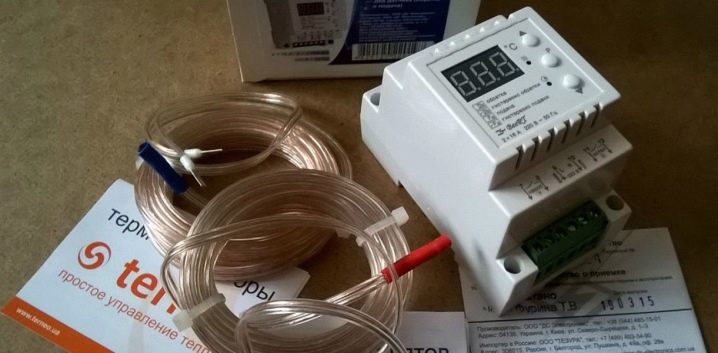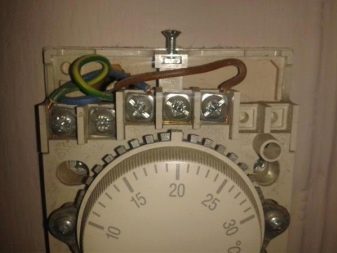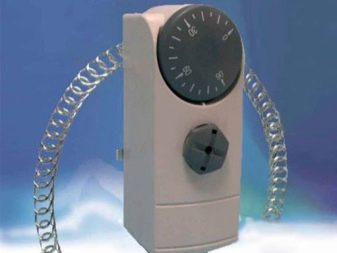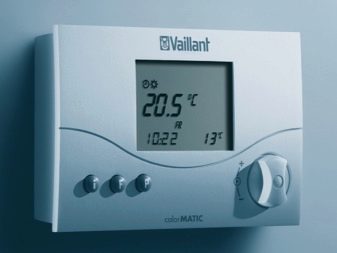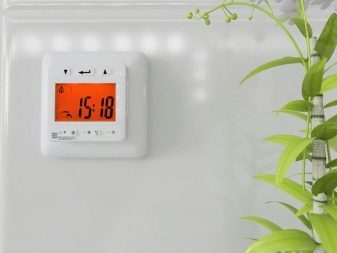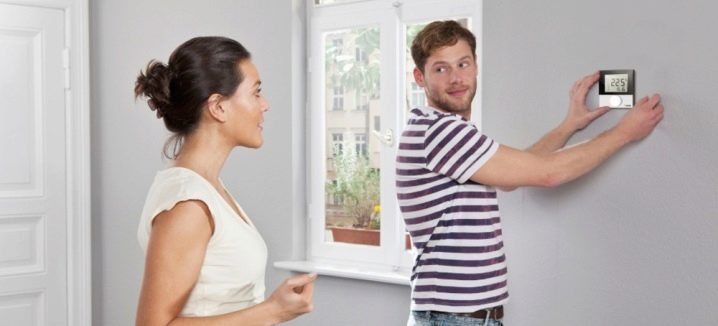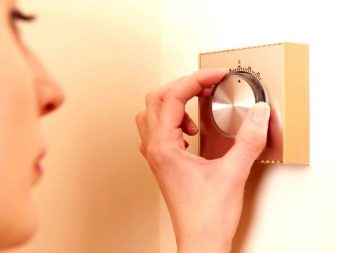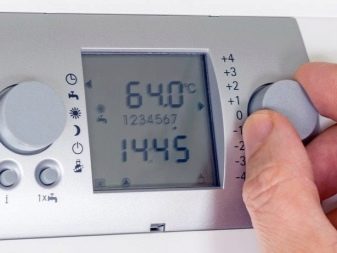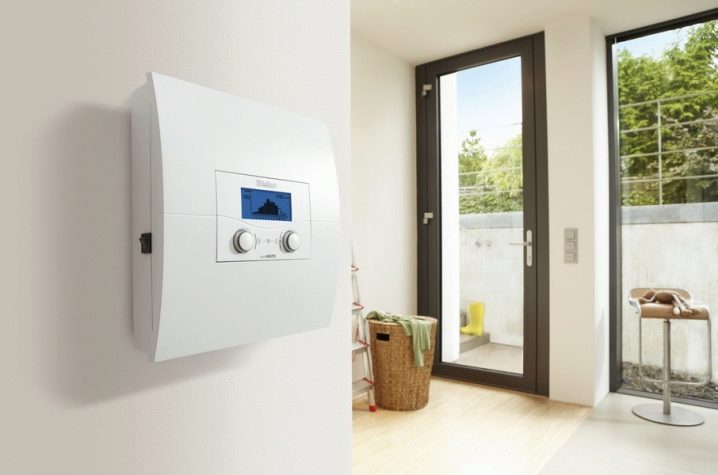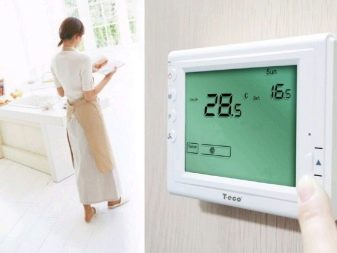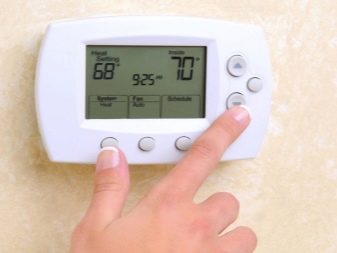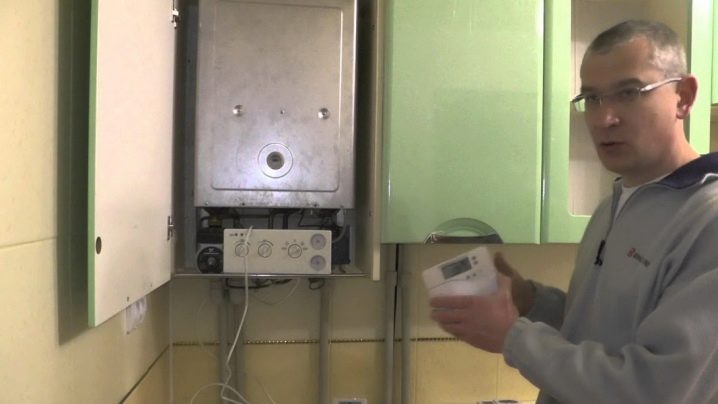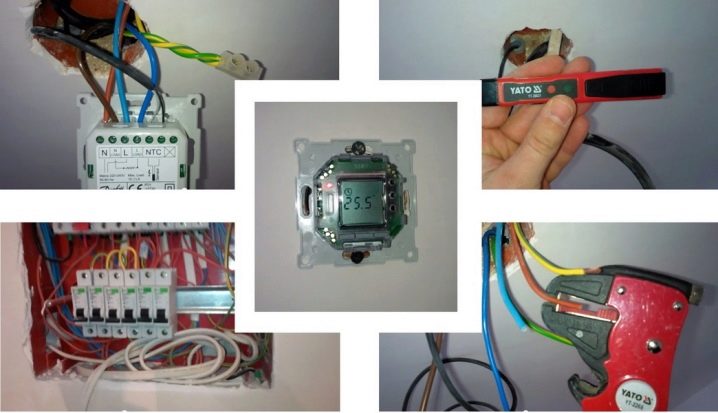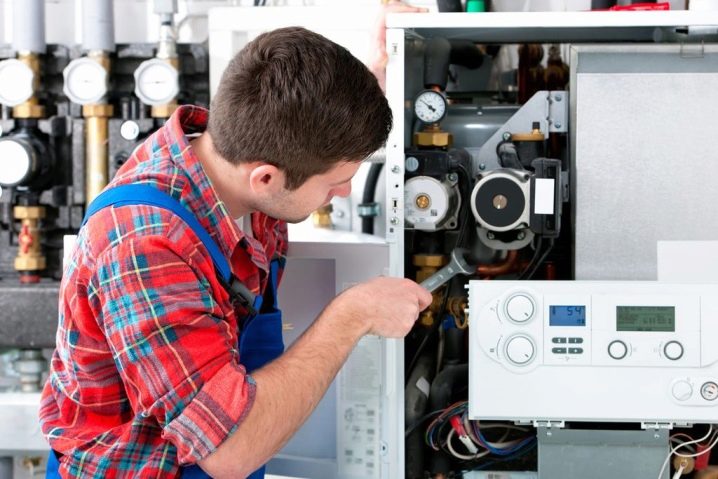Temperature controllers for heating boilers: types and rules of choice
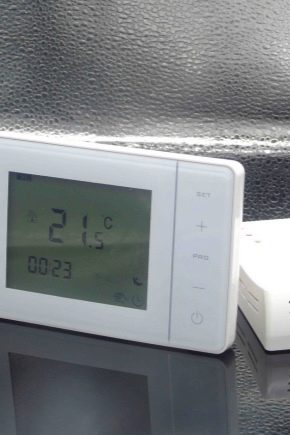
The heating system is an integral element of any dwelling. One of its components is a thermostat or, as it is also called a thermostat. Moreover, the importance of this element is difficult to overestimate. There are different versions of this device, and we will try to figure out how to choose the best solution for a particular heating system.
Purpose and principle of operation of the thermostat
Due to permanent temperature changes, it is necessary to regulate the heat output of the heater. If you keep it constantly on the same level, then at some time it will be too hot in the room, and at another - too cold. This is exactly what a device like a thermostat does.Basically, automatic models are being used, which themselves adjust the temperature so that it is comfortable in the room.
The main component that the thermostat for the heating boiler has is the temperature sensor. Its main task is to control the temperature of the heat carrier, which is located in the heating circuit, as well as the air temperature in the building. During its operation, the temperature controller compares the data that the temperature sensor transmits to the data entered by the user and sends a signal to the boiler control mechanism, making it stop or start.
Species
Depending on how this device reacts to temperature changes and performs certain actions, thermostats can be divided into three categories:
- electronic;
- mechanical;
- electromechanical devices.
Now we will tell more about each category.
Mechanical
The operation of this thermostat is based on the principle that with a change in temperature, the state of matter used in the sensor is transformed.
There may be two options:
- gas or liquid (expansion or compression occurs);
- metal (its elasticity changes).
The substance is usually contained in such a flask of itself, which is called the bellows. It is connected with a thin tube control panel. When the state of a substance changes, the valve stem, a group of contacts, or a gate valve are affected. The control unit determines when the thermostatic valve is triggered. If, as a sensor, a metal plate is used, the regulator will act in such a way that under the influence of temperature its deformation takes place. For this reason, there is a closing or opening of contacts. The plate status signal is sent to the control panel.
The advantages of this category of thermal regulators are:
- simple construction;
- affordable cost;
- lack of dependence on various energy sources.
She has some drawbacks:
- large dimensions;
- quite low sensitivity;
- serious adjustment error is about one to two degrees.
Electromechanical
In the case of an electromechanical thermostat, it will be based on two plates of different metals, interconnected. When they are affected by temperature, a potential difference is created that effects the electromagnetic-type relays.To obtain such a difference, a rather serious heating of the device is required. It is for this reason that they are used in boilers in which fuel combustion is used to heat the heat carrier. Then the sensor monitors the presence of fire and informs the control center if the flame disappears. That is, in fact, it also works as a safety element in this case.
Electronic
If we talk about electronic solutions, then they usually consist of two components:
- microcontroller;
- temperature sensor.
The microcontroller receives data from a thermal sensor, and after analyzing the information received, it performs certain actions for which it was programmed. As a rule, both units are located in the same building, and the transmission of signals between them is carried out by wireless technology through radio frequencies. There are options that transmit information using GSM technology.
According to the method of execution, electronic regulators are usually divided into two categories:
- digital;
- analog controllers.
Digital programmable sensor is used to connect with automatic systems of heating boilers.May have closed or open working logic. The first option does not allow to change its working algorithm, and the second allows you to do this by changing the software aspects of the thermostat for specific purposes. For example, the programmable option can be made to turn the heating on or off according to a schedule.
Models of analog type work according to an algorithm with a closed working logic, that is, they have the same capabilities as mechanical thermostats. Their only advantage over these analogues is that they have a fairly high measuring and tuning accuracy - about 0.2 - 0.5 degrees.
The advantages of electronic devices are as follows:
- various control unit options;
- use of remote sensor type;
- the highest accuracy of adjustment and measurement.
How to choose?
Where there is no centralized gas supply, boilers powered by electricity are used to heat the buildings. Among their advantages are the lack of the need to create a chimney, environmental friendliness, ease of installation, good performance, the presence of a control panel for working in auto mode.If we talk about the shortcomings, then it is essentially one - a high consumption of electrical energy, which becomes the reason for the high cost of such systems. But if you install a room thermostat, then this will make it possible to reduce energy costs by 25–30 percent and adjust the individual heating mode.
Before purchasing, it should be remembered that it is best if the boiler and thermostat are produced by one company. Popular solutions are made by companies such as Baxi, Ariston, Bosch and others.
In addition, the following factors should be taken into account:
- consider the target audience (if you buy a device for a home where an elderly person lives, then ask if he can deal with some programmable wireless controller with an air sensor);
- when choosing a model, pay attention to the simplicity of control (know its limit and emergency modes);
- it is better to purchase a thermostat equipped with a display (such models are more convenient because in addition to some given parameter, it is possible to see the air temperature at the time of interest);
- The thermostat requires electricity, and in rural areas there are often problems with it (for this reason, it is better to buy models that are not too sensitive to a lack of electricity, for example, mechanical ones;
- if you prefer the electronic version, then you should take a model that will at least work on batteries or install an uninterruptible power supply in the house;
- all devices differ from each other in power, so for the correct operation of the regulator, you should know the technical characteristics of the heated room;
- The material from which the building is made should also be taken into account (in houses made of wood, it is better not to install wired thermal sensors because it will not be possible to build channels under the tree).
How to connect with your own hands?
Let's talk how to install such a device yourself. External thermostat mounted in any living room. This is best done in the coldest room. Usually such a room is a corner room. Installation can be carried out in the most visited room - the hall or living room.If it is mounted in the hallway, boiler room or in the kitchen, the appliance will not allow the heating system to work correctly. For maximum objectivity of the device, it is necessary to reduce, as soon as possible, the influence of thermal interference.
These include:
- drafts;
- Sun rays;
- thermal effects from heating radiators and household electrical appliances.
It should not be forgotten that warm air usually rises, for which reason the thermostat must be placed as low as possible. Avoid its installation in closed spaces. To find out where there are contacts on the device for connecting various equipment, including a thermostat, you should study the instructions and other technical documentation.
To connect the thermostat to the heating mechanism, you first need to drain the water from the system, which will allow its discharge. Usually, to do this, you need to open the valve, which is located at the water inlet to the pipes. Blow off the pipes and unscrew the adapter. To dismantle it, you must first put more rags so that the water that flows out is quickly absorbed.After pressing the body of the old valve, using a wrench adjustable type. The second is loosened the nuts holding the valve on the pipe and adapter. Next, pull the part out of the radiator. In some cases, you should use the battery valve, which is located inside.
In the next step, it is necessary to install the thermostat. Before that, carry out the cleaning of the internal thread. It is better for this purpose to take a piece of clean fabric, then wrap the thread with a special tape of the locking type. It is important that this should be done exclusively in a clockwise direction. After any turn it is necessary to smooth it. The screw element is attached to the gaskets of the angular type. When installing the device, they replace the blank nut and the old steel collar. They are on a copper pipe. If the collar does not slide off, you should carefully cut off its parts and detach them from one another with a screwdriver. After install the thermostat. After that, tighten the nut located between the valve and the adapter. The valve must be held with a wrench.
Be careful not to overtighten the thread. Otherwise, the system may become depressurized.After that, install a spare protective mechanism, then fill the pipe with water. When all pipes are filled with water, check the joints for leaks. Next, the regulator should be adjusted. It should be understood that if you set the temperature to 22-23 degrees, and give a difference of two degrees, then the thermostat will turn on the boiler at this level, and turn off at 24-25 degrees.
In general, there are several categories of thermostats, each of which has its own advantages and disadvantages. Selection should be carried out individually in each case. It is quite simple to choose a device and install it. It is necessary to follow all the rules and technical features during installation.
How to connect the thermostat for boilers, see the following video.
